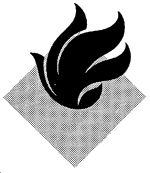 |
 |
 |
 |
| Chapter 7 - Page 1 |

In many survival situations, the ability to start a fire can make the difference between living and dying. Fire can fulfill many needs. It can provide warmth and comfort. It not only cooks and preserves food, it also provides warmth in the form of heated food that saves calories our body normally uses to produce body heat. You can use fire to purify water, sterilize bandages, signal for rescue, and provide protection from animals. It can be a psychological boost by providing peace of mind and companionship. You can also use fire to produce tools and weapons.
Fire can cause problems, as well. The enemy can detect the smoke and light it produces. It can cause forest fires or destroy essential equipment. Fire can also cause burns carbon monoxide poisoning when used in shelters.
Remember weigh your need for fire against your need to avoid enemy detection.
To build a fire, it helps to understand the basic principles of a fire. Fuel (in a nongaseous state) does not burn directly. When you apply heat to a fuel, it produces a gas. This gas, combined with oxygen in the air, burns.
Understanding the concept of the fire triangle is very important in correctly constructing and maintaining a fire. The three sides of the triangle represent air, heat, and fuel. If you remove any of these, the fire will go out. The correct ratio of these components is very important for a fire to burn at its greatest capability. The only way to learn this ratio is to practice.
You will have to decide what site and arrangement to use. Before building a fire consider —
The area (terrain and climate) in which you are operating.
The materials and tools available.
Time: how much time you have?
Need: why you need a fire?
Security: how close is the enemy?
Look for a dry spot that —
Is protected from the wind.
Is suitably placed in relation to your shelter (if any).
Will concentrate the heat in the direction you desire.
Has a supply of wood or other fuel available. (See Figure 7-4 for types of material you can use.)
| Tinder | Kindling | Fuel |
|---|
| Page: 1 2 3 4 | Next Page >> |
| Updated: 12 January 2008 |
|
Born on October 1999 |